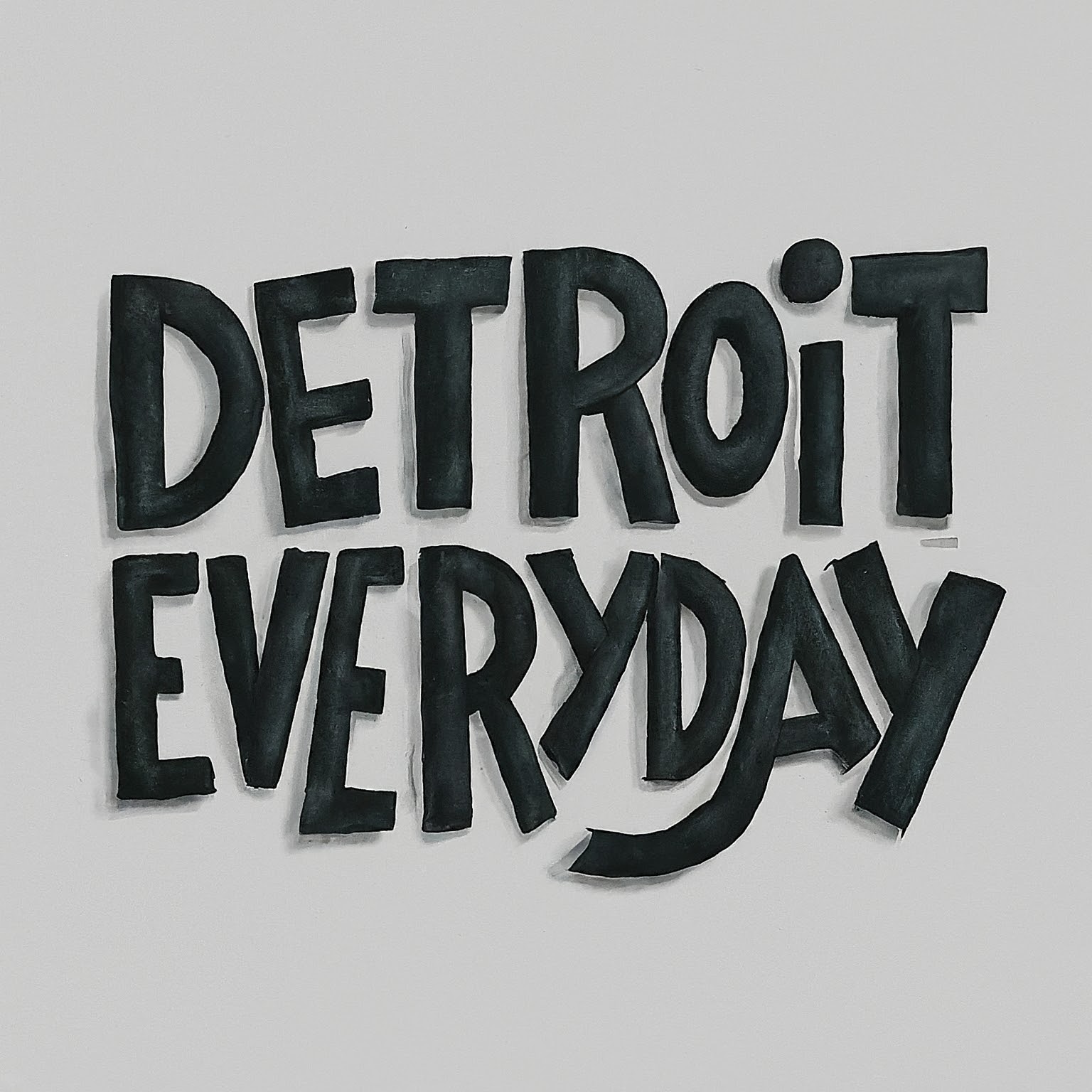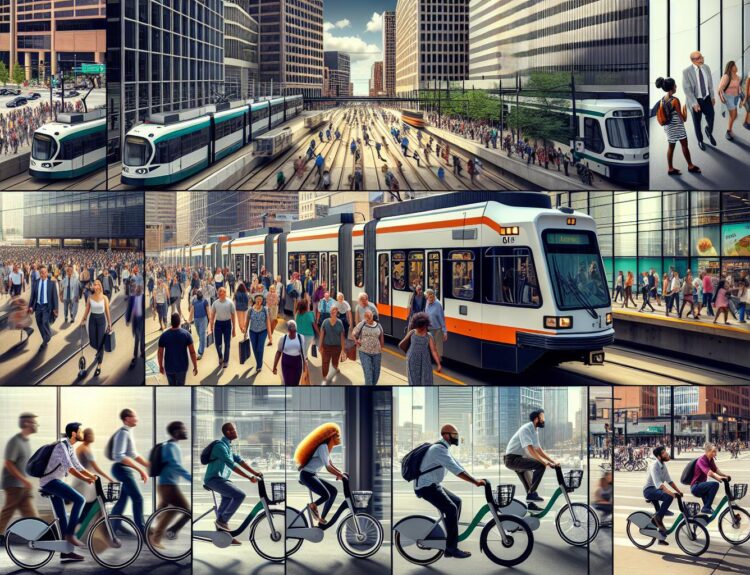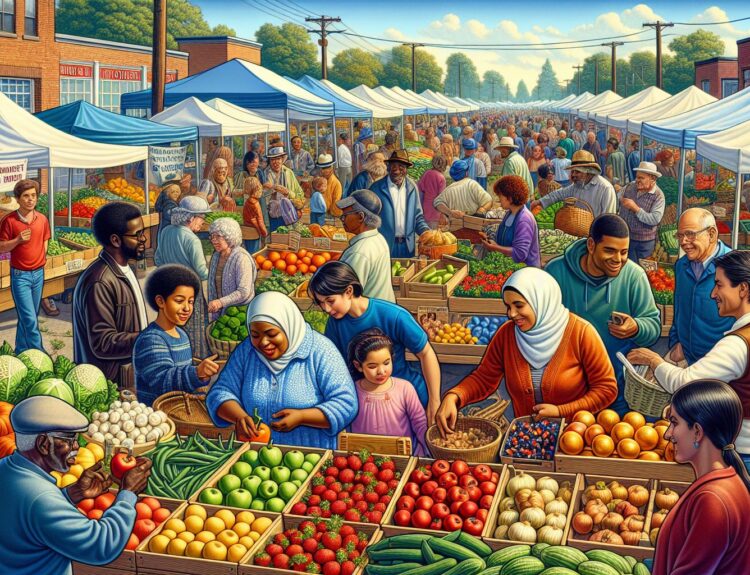I’ve always believed that the heart of any neighborhood beats strongest at the local association meetings. It’s where ideas flow, concerns are voiced, and community bonds are strengthened. Whether it’s planning the next big block party or tackling local safety issues, these gatherings are a testament to what we can achieve together.
But let’s be real, not everyone’s thrilled at the thought of spending their evenings discussing bylaws and budget allocations. That’s where the magic of community initiatives comes in. They’re the perfect blend of action and purpose, turning the mundane into something truly impactful. From beautification projects to local food drives, these efforts not only enhance our surroundings but also forge deeper connections among neighbors.
Diving into the world of neighborhood association meetings and community initiatives, I’ve discovered it’s about so much more than agendas and minutes. It’s about the collective power of people who care deeply about where they live and are committed to making a difference. Let’s explore how these gatherings and projects can transform not just our neighborhoods but also our sense of belonging and community spirit.
Exploring the Importance of Neighborhood Association Meetings
When I first moved into my neighborhood, I wasn’t sure what to expect from the neighborhood association meetings. I quickly learned that these gatherings are more than just a forum for discussing the mundane aspects of community life, like bylaws and budgets. They’re a vital part of ensuring that our neighborhood not only maintains its charm and safety but also evolves to meet the changing needs of its residents.
One of the most essential functions of these meetings is communication. It’s here that neighbors exchange information about local issues, from planning city projects to addressing minor concerns like pot holes or street lighting. This direct line of communication is invaluable. It not only keeps everyone informed but also fosters a sense of participation and influence over the decisions that affect our daily lives.
Moreover, these meetings are a breeding ground for community initiatives. It’s truly inspiring to see ideas blossom into action, whether it’s organizing a neighborhood cleanup, setting up a community garden, or planning a block party. Each initiative strengthens the bonds among neighbors, creating not just a sense of belonging but a tangible, communal spirit that’s hard to find elsewhere.
The impact of these gatherings doesn’t stop at creating a sense of community. They play a crucial role in resident safety and local development. It’s within these meetings that strategies for neighborhood watch programs are formulated and discussions about development projects are held. These conversations ensure that our neighborhood remains a safe, welcoming place for current and future generations.
Moreover, attending these meetings has shown me the power of collective effort. It’s remarkable what can be achieved when a group of committed individuals come together for the common good. We’ve seen beautification projects not only improve the aesthetic of our neighborhoods but also increase property values. Initiatives like these showcase the tangible benefits of active participation in our community’s welfare.
- Communication: Exchange of local issues and concerns.
- Community Initiatives: Ideas turning into action for community improvement.
- Resident Safety: Formulating strategies for neighborhood safety.
- Local Development: Discussions on development projects for neighborhood enhancement.
- Collective Effort: Achievements made through the power of community.
Benefits of Active Participation in Community Initiatives
When I think about the vibrancy of my own community, I can’t help but attribute a significant part of it to the active participation in our local initiatives. It’s the engine that drives our neighborhood’s spirit, fostering an environment where everybody feels they’re part of something larger than themselves. Let me walk you through some of the key benefits that I’ve observed from being actively involved.
Empowerment and Ownership
First and foremost, getting involved gives me a sense of empowerment and ownership over the space I call home. There’s something incredibly fulfilling about seeing a project I contributed to come to fruition. Whether it’s a newly planted community garden or the success of a neighborhood watch program, the feeling is indescribable. This involvement makes me feel like I’m directly contributing to the well-being and safety of my community.
Enhanced Community Relations
Then there’s the undeniable effect on community relations. The relationships I’ve built through these gatherings and projects are invaluable. We’re no longer just neighbors; we’re collaborators and friends. This transformation has not only made my neighborhood feel safer but has also created a more communicative environment where people feel comfortable sharing concerns and ideas.
Educational Opportunities
Participating in community initiatives has also been a fantastic learning experience. Every project brings its own set of challenges and, with that, new knowledge. I’ve learned about horticulture through community gardens, organizational skills through event planning, and even local governance through discussions on community-led projects. These are skills and insights I might not have gained otherwise.
Impact on Local Development
Moreover, the collective voice of an engaged community can significantly impact local development and policies. By voicing our needs and concerns, we’ve been able to influence decisions that directly affect our neighborhood’s landscape and quality of life. It’s empowering to know that by coming together, we can advocate for positive changes that align with our collective vision for the community.
As I reflect on these benefits, it’s clear that active participation in community initiatives does not just enhance the physical space we inhabit. It strengthens the very fabric of our community, creating a more interconnected, informed, and vibrant environment. Through our collective efforts, we’re not just maintaining the charm and safety of our neighborhood; we’re laying down the foundations for a community that adapts and thrives along with its residents.
Strategies for Successful Community Initiatives
In my journey with neighborhood associations, I’ve picked up a few strategies that really make a difference in the success of community initiatives. These aren’t secret formulas, but rather common-sense approaches that ensure everyone’s on the same page and the project achieves its goals.
Firstly, communication is key. It sounds simple, but effective communication can make or break a community project. This means regular meetings, clear and concise emails, and perhaps most importantly, a designated communication platform where everyone can voice their opinions and updates. I’ve seen projects flourish simply because everyone knew what was happening and when.
Another crucial strategy is setting clear, achievable goals. At the start of any initiative, it’s vital to outline what success looks like. This helps in keeping the team focused and provides a yardstick for measuring progress. For instance, if we’re working on a community garden, setting a goal like “Plant and maintain 20 vegetable plots by the end of the season” gives everyone a clear target to aim for.
Engaging the wider community is also a strategy that shouldn’t be underestimated. By involving more people, you not only gain additional hands and ideas but also foster a sense of ownership among the community. Techniques for engagement can range from hosting kick-off events to regular update newsletters. The broader the engagement, the stronger the project’s foundation.
One thing I’ve learned is the importance of celebrating small victories. It’s easy to get lost in the grand vision of the project and forget to acknowledge the milestones along the way. Celebrating these moments boosts morale and motivates everyone to keep pushing forward.
Lastly, flexibility has been a cornerstone of our most successful initiatives. No matter how well you plan, there will always be unforeseen challenges. Being able to adapt and adjust plans is crucial. This adaptability doesn’t mean losing sight of your goals but rather finding different paths to achieve them.
| Strategy | Description |
|---|---|
| Effective Communication | Ensures everyone is informed and involved. |
| Clear, Achievable Goals | Provides a focused target and measures progress. |
| Community Engagement | Involves more people for greater support and ownership. |
| Celebrating Milestones | Recognizes progress and maintains morale. |
| Flexibility | Allows adaptation to unexpected challenges without losing sight of goals. |
Examples of Transformative Community Projects
When I think back on the transformative power of community projects, a few standout examples come to mind. These initiatives not only revitalized their neighborhoods but also brought residents closer together, showcasing the potential of collective action.
Urban Gardens and Green Spaces
In one instance, a neglected lot in the heart of the city was transformed into a vibrant community garden. What was once an eyesore became a lush, green space where neighbors could gather, garden, and grow their own food. This project not only beautified the area but also provided a sense of pride and ownership among the residents. The initiative started small, but as more people got involved, it became a centerpiece of the community, fostering relationships and encouraging a healthier lifestyle.
Neighborhood Watch Programs
Another example that truly resonated with me was the establishment of a neighborhood watch program in a community plagued by petty crime. Residents came together, organized regular patrols, and created a communication network to report suspicious activities. The impact was immediate; there was a notable decrease in crime rates, and people felt safer in their homes. This initiative demonstrated the strength of a united community and the importance of looking out for one another.
Community Centers and Youth Programs
Perhaps one of the most impactful projects was the development of a community center that offered various programs for the youth, including afterschool tutoring, sports leagues, and arts and crafts classes. This center provided a safe and nurturing environment for children to learn and play, significantly improving the quality of life for families in the area. It became a hub of activity and engagement, where bonds were formed and a sense of belonging was cultivated among participants.
Cultural Festivals
Lastly, organizing cultural festivals has been a fantastic way to celebrate the diverse heritage of our neighborhood. These festivals not only serve as a platform for local artists and performers but also create opportunities for residents to experience and appreciate different cultures. The gatherings attract large crowds, including those from surrounding areas, fostering a sense of community and unity.
Each of these examples underscores the potential of neighborhood associations and community initiatives to create lasting change. By focusing on achievable goals, fostering engagement, and celebrating our successes, we can continue to transform our communities for the better.
Fostering a Stronger Sense of Community Through Initiative
In my journey through various neighborhoods, I’ve noticed a common thread among the most vibrant and connected communities: the proactive role of neighborhood association meetings and community initiatives. From my perspective, these aren’t just formal gatherings or obligatory projects; they’re the heartbeat of community engagement and the foundation of a strong community spirit.
Neighborhood association meetings offer a platform for residents to voice their concerns, share ideas, and make collective decisions. It’s at these meetings that I’ve seen the magic happen. Ideas for community gardens, local cleanup days, and neighborhood block parties transform from mere thoughts into concrete plans. But what really stands out to me is how these initiatives serve as more than just activities—they’re opportunities for neighbors to meet, exchange stories, and build friendships.
One unforgettable experience was when I participated in a local cleanup event organized through our neighborhood association. It wasn’t just about picking up trash; it was a day filled with laughter, conversations, and getting to know the people living around me on a deeper level. I remember thinking, This is what community feels like.
Another striking example of fostering a stronger sense of community is the implementation of shared gardens. These green spaces not only beautify the neighborhood and provide fresh produce but also become gathering spots. Kids learn about planting and nurturing plants, adults share gardening tips, and everyone enjoys the fruits (and vegetables) of their labor. It’s initiatives like these that turn neighbors into a tight-knit family.
Supporting local businesses through community initiatives has also proven to be a powerful way to strengthen community ties. Whether it’s organizing weekend markets for local artisans or creating directories of neighborhood businesses, these efforts ensure the local economy thrives and residents feel a deeper connection to their surroundings. It’s a win-win that fosters pride and support within the community.
Through these experiences, I’ve learned that fostering a stronger sense of community requires a mix of fun, work, and celebration. Achievable goals like planting a garden, cleaning up the neighborhood, or supporting local businesses can significantly impact how connected and supported residents feel. It’s about taking initiative, whether big or small, to make the neighborhood not just a place where you live, but a place you proudly call home.
Conclusion
I’ve always believed that strong communities don’t just happen by accident. They’re built through effort, care, and the willingness of individuals to come together for the common good. The initiatives we’ve talked about aren’t just tasks to be checked off a list. They’re stepping stones toward a more connected, vibrant, and resilient community. Whether it’s through a shared garden that brings greenery and life to our streets or a cleanup event that instills pride in our surroundings, each action we take together strengthens the bonds between us. Let’s not underestimate the power of these gatherings and initiatives. They’re our chance to not only improve our neighborhoods but to transform them into places where friendships flourish and a sense of belonging grows. Here’s to making our community a better place, one meeting and initiative at a time.






